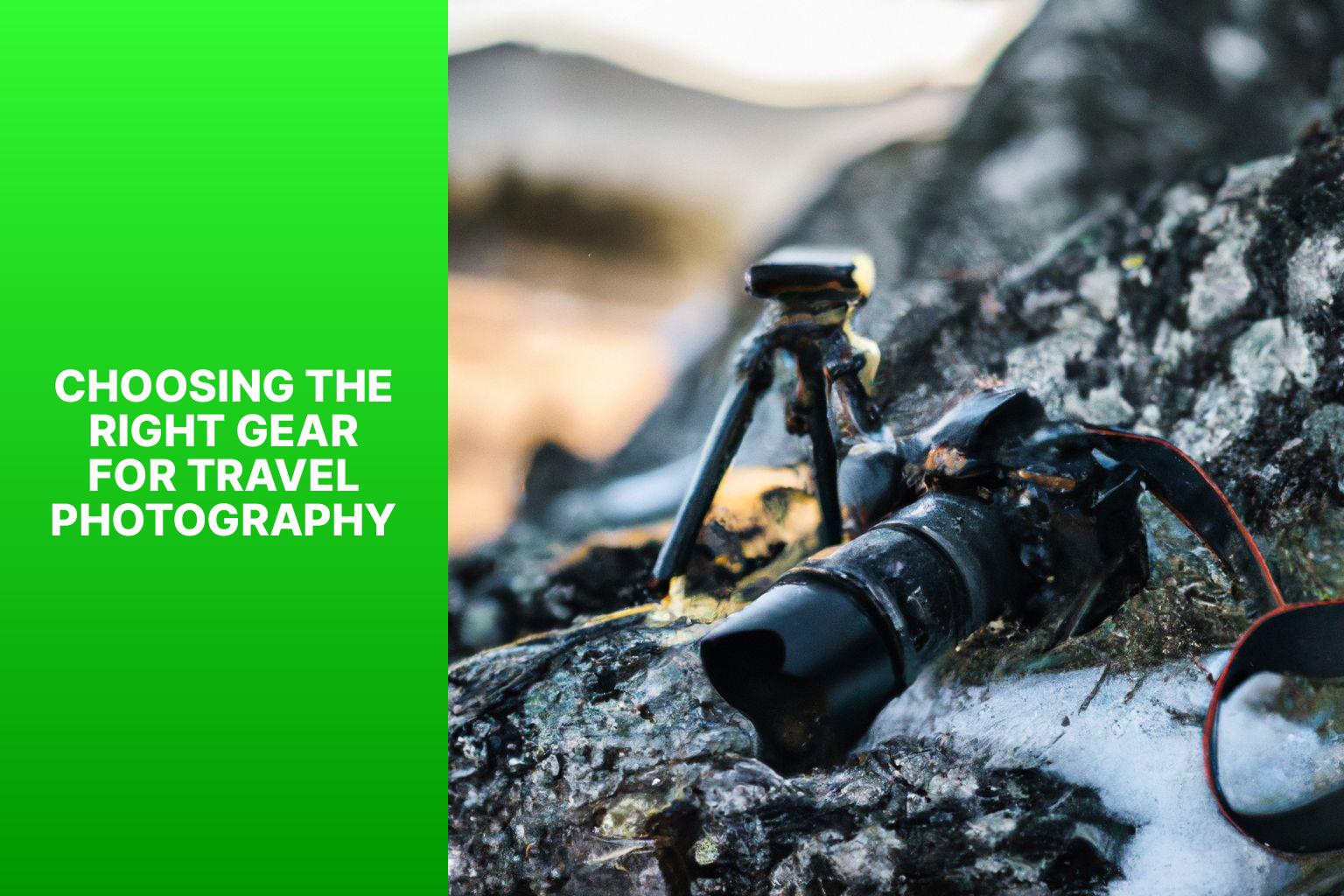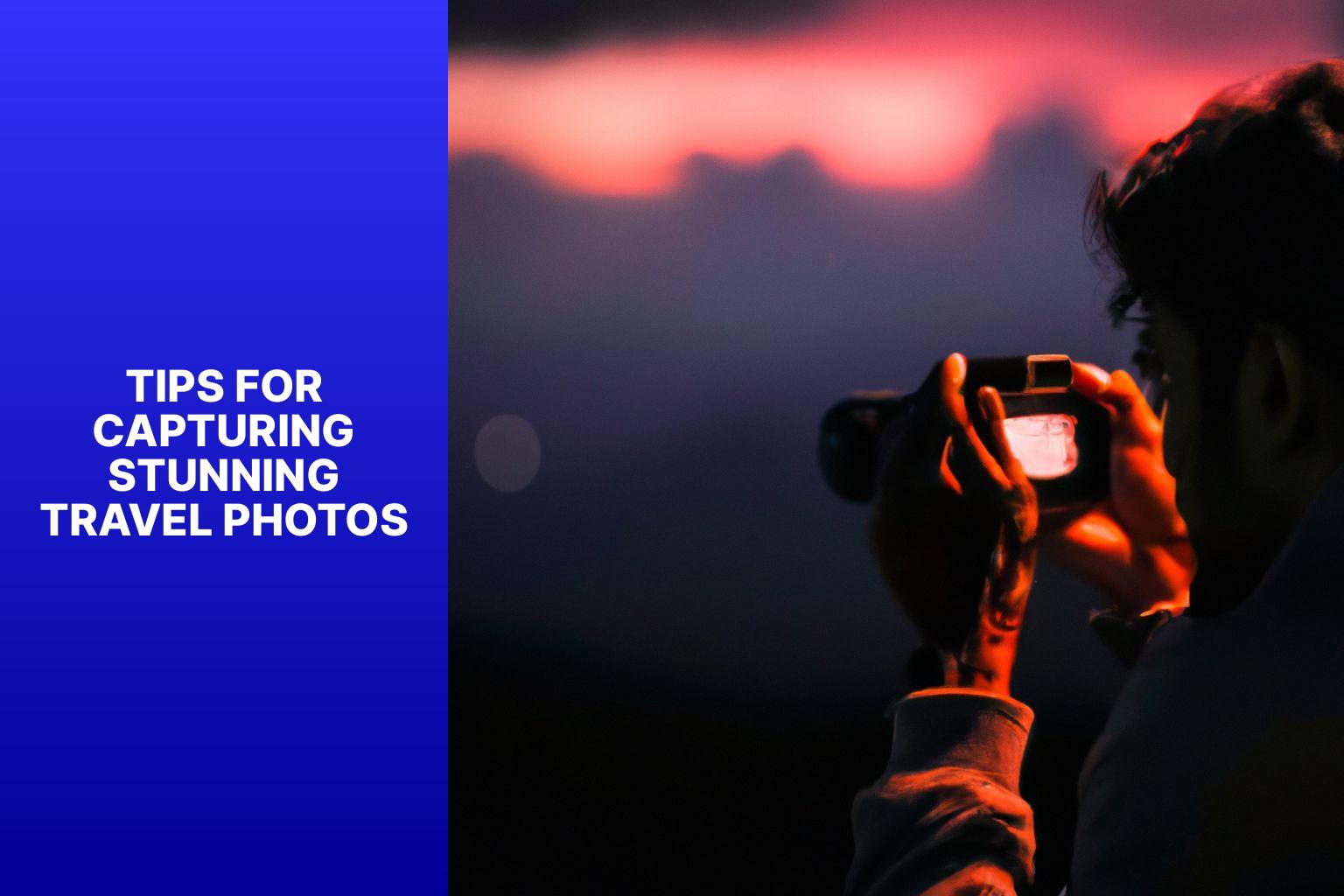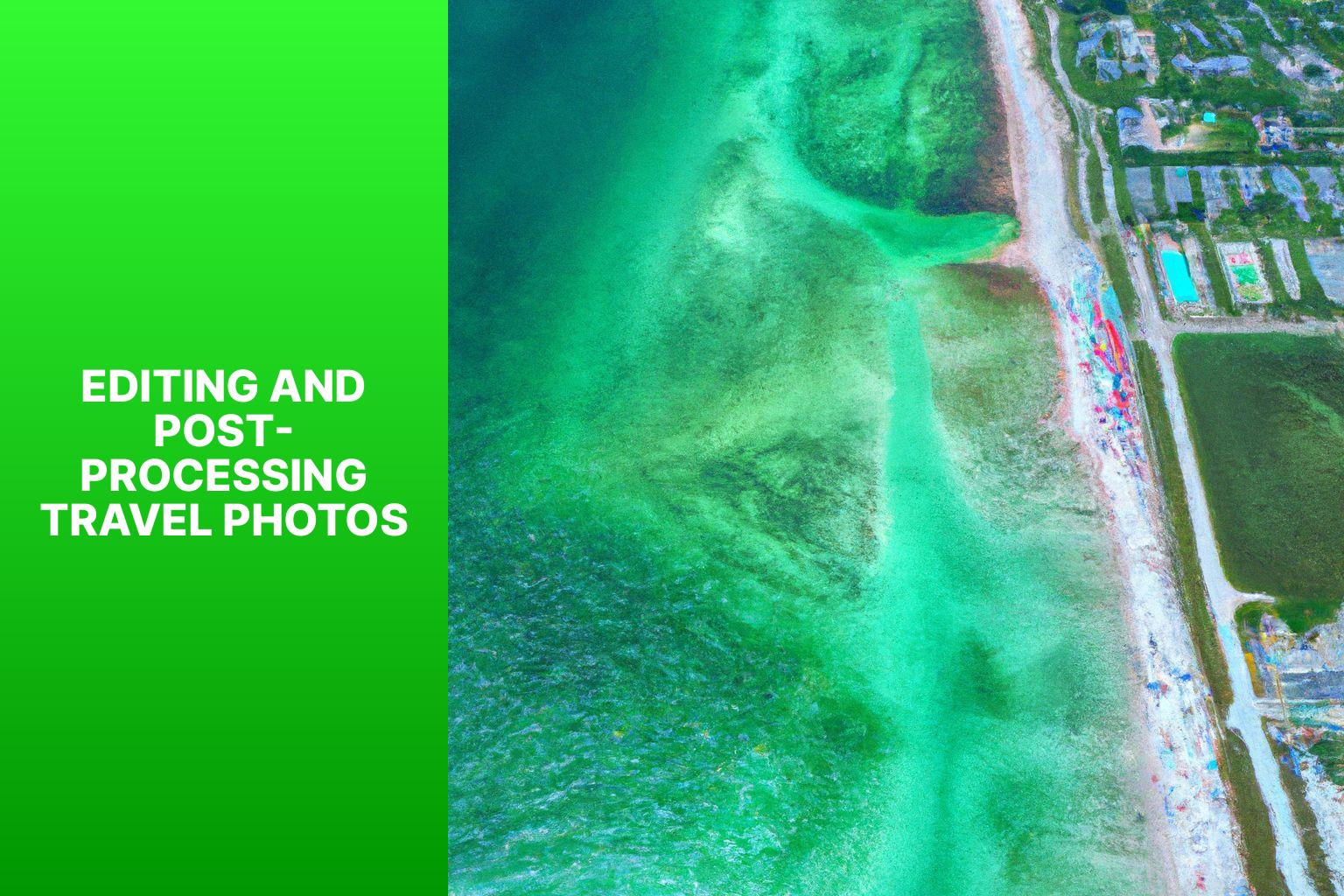A Man’s Guide to Travel Photography: Capturing Your Adventures
Travel photography is a wonderful way to capture the beauty and essence of your adventures. Whether you’re a seasoned photographer or just starting out, having the right knowledge and equipment can elevate your travel photos to new heights. In this guide tailored for men, we’ll explore the essential gear for travel photography, understand the importance of composition and lighting, discover tips for capturing stunning travel photos, delve into editing and post-processing techniques, and learn how to share your travel photography with the world. We’ll provide valuable tips for traveling with your photography equipment to ensure its safety and maximize the enjoyment of your photography experience.
Choosing the right gear is crucial for travel photography. We’ll discuss cameras, lenses, and accessories that are well-suited for capturing your adventures. Understanding composition and lighting is essential for creating captivating photographs. Techniques like the rule of thirds, leading lines, and utilizing the golden hour will help you compose visually appealing shots. Capturing stunning travel photos involves researching your destination, capturing local culture and people, experimenting with angles and perspectives, incorporating natural frame elements, and adding movement and action to your shots. Editing and post-processing can enhance the colors, contrast, and overall quality of your travel photos. We’ll explore sorting and selecting your best shots, enhancing colors and contrast, and removing unwanted objects. Sharing your travel photos with others is an exciting part of the photography journey. We’ll discuss creating a travel photography portfolio, utilizing social media platforms, and submitting your photos to travel magazines and websites. We’ll provide tips for traveling with your photography equipment, including packing and protecting your gear, understanding local laws and restrictions, and backing up your photos to ensure their safety. With this guide, you’ll be equipped to capture and share your adventures through the art of travel photography.
Key takeaways:
Key takeaway:
- Introduction to Travel Photography: Learn the basics of travel photography to capture memorable moments during your adventures.
- Choosing the Right Gear for Travel Photography: Understand the importance of selecting the appropriate equipment to capture high-quality travel photos.
- Tips for Capturing Stunning Travel Photos: Enhance your photography skills by learning about composition, lighting, and techniques like the rule of thirds, leading lines, and golden hour.
Choosing the Right Gear for Travel Photography

Photo Credits: Www.Moderngentlemanmagazine.Com by Zachary Wilson
Capturing breathtaking moments while traveling requires the right gear. In this section, we’ll uncover the secrets behind choosing the perfect equipment for travel photography. From understanding composition to mastering lighting techniques, get ready to enhance your skills and make your adventures truly unforgettable! Adventure awaits, so let’s gear up and start capturing those incredible shots.
Understanding Composition and Lighting
“Understanding composition and lighting is essential for capturing stunning travel photos. By understanding the principles of composition and utilizing appropriate lighting techniques, you can greatly enhance the visual appeal and impact of your images.
The rule of thirds is a fundamental principle of composition that you should incorporate. Instead of placing your subject in the center of the frame, divide your image into three equal sections both horizontally and vertically. Position your subject along these lines or at the intersection points to create a more balanced and visually pleasing composition.
Incorporate leading lines into your composition to guide the viewer’s eyes towards your main subject and create depth and dimension. Leading lines can include roads, paths, or natural elements like rivers or tree branches.
Take advantage of the golden hour, which is shortly after sunrise or before sunset, as it provides favorable lighting conditions for photography. The soft, warm, and directional light during this time can add a beautiful golden glow, as well as dramatic shadows and highlights, to your images.
Pay attention to the contrast and shadows in your composition. By utilizing a mix of light and dark areas, you can add depth and texture to your photos, making them visually interesting and dynamic.
Consider both natural and artificial lighting sources when composing your shots. Natural light can provide a softer and more flattering look, while artificial light sources like streetlights or architectural lighting can add a different mood or atmosphere to your images.
Understanding composition and lighting allows you to capture visually compelling and emotionally impactful travel photos. So, make sure to experiment with different techniques and lighting conditions to create unique and stunning images that truly tell the story of your adventures.”
Rule of Thirds
The rule of thirds is a composition technique in photography that creates visually interesting and balanced images. When using the rule of thirds, consider the following:
1. Divide your frame: Divide your image into a grid of nine equal parts using two horizontal lines and two vertical lines. This creates four intersection points that should be the areas of focus when applying the rule of thirds.
2. Place your subject strategically: Instead of centering your subject, position it near one of the intersecting points. This off-center placement adds depth and visual interest to your photo.
3. Balance your composition: Use the rule of thirds to achieve a balanced composition by distributing the visual weight of your elements. Place your main subject on one side and balance it with other elements or negative space on the opposite side for a harmonious composition.
4. Enhance leading lines: Incorporate leading lines that naturally draw the viewer’s eye through the image. Align the leading lines with the gridlines or have them lead towards one of the intersecting points to guide the viewer’s gaze in a dynamic way.
5. Experiment and adjust: While the rule of thirds is a useful guideline, it is not a strict rule. Feel free to experiment with different placements and compositions to achieve your desired effect. Breaking the rule of thirds can sometimes lead to creative and unique images.
By understanding and utilizing the rule of thirds in your travel photography, you can capture visually striking and well-balanced images that reflect the essence of your adventures.
Leading Lines
Leading lines are powerful tools in travel photography. They guide the viewer’s eye through the image and create depth and direction. When using leading lines in your photos, consider these key points:
1. Purpose: Leading lines draw attention to a specific subject or point of interest in your photo. They guide the viewer’s gaze and create a visual pathway to the main focal point.
2. Types: Incorporate various types of leading lines into your composition, such as paths, roads, fences, bridges, railings, or any other elements that form a line or pathway within the frame.
3. Direction: Pay attention to the direction of the leading lines. Vertical lines create strength or height, diagonal lines add dynamism or tension, and horizontal lines evoke calm or stability.
4. Placement: Strategically position your subject along the leading lines to enhance visual impact. Experiment with different angles and perspectives to find the most effective placement.
5. Perspective: Varying your shooting perspective greatly impacts how leading lines are perceived. Get low to the ground for a unique viewpoint or shoot from above to emphasize the lines from a different vantage point.
6. Balance: Leading lines should complement and balance the other elements in your composition. Consider the overall aesthetic and ensure the lines add to the visual appeal of the image.
By incorporating leading lines into your travel photography, you can create visually engaging images that capture the viewer’s attention and guide them through your story. Experiment with different types of leading lines and perspectives to add depth and interest to your photographs.
Golden Hour
Golden Hour is the hour after sunrise and the hour before sunset, when lighting conditions for photography are ideal. The soft, warm light during this time is perfect for capturing stunning travel photos.
Golden Hour provides a natural and beautiful glow to your subjects, creating a warm and magical atmosphere. The low angle of the sun also adds depth and dimension to your photographs. Shadows are longer and softer, resulting in a visually interesting image.
To make the most of Golden Hour, plan your shoot in advance. Determine the exact times of sunrise and sunset for your location to ensure you don’t miss the window of opportunity. Arrive early to set up your gear and scout the area for potential compositions.
During this time, avoid shooting directly into the sun, as it can cause lens flares and overexposure. Instead, position yourself so that the light is hitting your subject from the side or behind, creating a warm backlight.
Experiment with different angles and compositions to take full advantage of the golden light. Consider incorporating elements such as silhouettes, reflections, or long shadows to add interest and drama to your images.
Golden Hour is a magical time for travel photography. By utilizing the soft, warm light and planning your shoot in advance, you can capture stunning and memorable photographs that showcase the beauty of your destination.
Tips for Capturing Stunning Travel Photos

Photo Credits: Www.Moderngentlemanmagazine.Com by Jeffrey Anderson
Tips for Capturing Stunning Travel Photos
Here are some tips for capturing stunning travel photos:
1. Plan ahead: Research your destination and identify key landmarks or scenic spots to photograph.
2. Be prepared: Pack camera gear, including extra batteries and memory cards, to not miss any photo opportunities.
3. Use the golden hour: Take advantage of soft, warm light during sunrise or sunset for enchanting photos.
4. Experiment with composition: Try different angles and perspectives to add interest. Use the rule of thirds for balanced composition.
5. Capture local culture: Photograph unique aspects of the place you’re visiting, such as people, customs, and traditions.
6. Look for details: Pay attention to small details that tell a story, like textures, patterns, and colors.
7. Add a human element: Including people in your photos adds scale and brings life to travel images.
8. Keep it simple: Avoid cluttered backgrounds and make sure the main subject stands out.
9. Experiment with camera settings: Play with aperture, shutter speed, and ISO for different effects and capturing the moment’s essence.
10. Edit wisely: Use photo editing software to enhance images without overdoing it. Enhance the scene’s natural beauty without making it look overly processed.
By following these tips, you can capture stunning travel photos that allow you to relive your adventures for years to come.
Editing and Post-Processing Travel Photos

Photo Credits: Www.Moderngentlemanmagazine.Com by Mark Williams
Editing and post-processing travel photos is crucial for producing breathtaking and professional images that beautifully showcase your adventures. Here are the steps you should follow:
- Choose the perfect software: Select a photo editing software that suits your specific needs and preferences, such as Adobe Lightroom, Capture One, or Luminar.
- Transfer and import your photos: Transfer the photos from your camera or memory card to your computer, and then import them into your chosen editing software.
- Organize and cull: Go through your images and carefully choose the best ones for editing. Delete any duplicates, blurry shots, or images that don’t meet your criteria.
- Adjust exposure and white balance: Utilize editing tools to correct the exposure and white balance. Make adjustments to brightness, contrast, highlights, shadows, and temperature to achieve your desired look.
- Enhance colors: Fine-tune vibrance, saturation, and individual color channels to make the colors truly pop. Maintain a natural appearance and avoid excessive alterations.
- Crop and straighten: Improve composition by cropping images to eliminate distractions. Align crooked horizons or lines for a polished result.
- Sharpen and reduce noise: Enhance details and clarity using appropriate sharpening techniques. Employ noise reduction tools to minimize unwanted grain or noise.
- Add creative effects if desired: Experiment with filters, presets, or effects to add a unique touch to your photos. Maintain a consistent style and refrain from going overboard.
- Save and export: Once you are satisfied with your edits, save your photos in a high-quality format and export them in the desired size and resolution for sharing or printing.
- Create backup copies of your edited photos: Safeguard your hard work and precious memories by creating backup copies to prevent any loss.
Sharing Your Travel Photos
Sharing your travel photos is an exciting way to showcase adventures and inspire others. Here are some tips to effectively share your travel photos:
- Choose the right platform: Select a platform that aligns with your goals and target audience. Popular options include Instagram, Facebook, and Pinterest.
- Create engaging captions: Craft captions that provide context, tell a story, or share interesting facts about your photo. This captures your audience’s attention and encourages engagement.
- Use relevant hashtags: Research and include relevant hashtags to expand your reach and attract like-minded travelers. For example, if you visited Paris, use hashtags like #ParisTravel or #ExploreFrance.
- Tag locations and people: When sharing your travel photos, tag specific locations you visited. This helps others discover new places and allows local businesses to engage. Tag your friends or family in photos to include them in the experience.
- Share travel tips: Provide valuable travel tips and recommendations alongside your photos. This adds value to your audience and positions you as a knowledgeable traveler.
- Engage with your audience: Respond to comments, engage with other travel accounts, and participate in relevant travel communities. Building connections and fostering engagement helps grow your audience and increase your reach.
- Consider collaborating: Collaborate with other travel photographers, influencers, or brands to cross-promote each other’s content. This expands your reach to a broader audience.
- Protect your photos: While sharing your travel photos, take precautions to protect your work. Consider watermarking your images or using copyright notices to maintain ownership.
By following these tips, you can effectively share your travel photos and inspire others to explore the world. Remember, each photo holds a story, and sharing them can create a community of fellow adventurers!
Tips for Traveling with Photography Equipment
Tips for Traveling with Photography Equipment
– When traveling, it is important to invest in a sturdy camera bag to protect your photography equipment. This will ensure that your gear remains safe and undamaged during your journey.
– Consider the weight and size of your gear when choosing a camera bag. Opt for a lightweight bag that will be easy to carry and won’t add unnecessary bulk to your luggage.
– To keep your equipment organized and well-protected, make use of padded dividers inside your camera bag. This will prevent any accidental bumps or scratches that could potentially damage your gear.
– Limit the amount of photography equipment you bring with you to only the essentials. This will not only help you avoid damage but also reduce the risk of theft while you are on the go.
– For stable shots, it is recommended to invest in a lightweight travel tripod. This will allow you to capture clear and steady images, even in challenging conditions.
– Make it a habit to regularly clean your camera and lenses using a proper lens cloth and blower brush. This will help maintain the quality of your equipment and prevent any dust or debris from affecting your photos.
– To prevent accidental drops or theft, always use a camera strap. This will ensure that your camera remains securely attached to you, giving you peace of mind while shooting.
– In extreme weather conditions, it is advisable to use a waterproof camera cover. This will protect your gear from any water damage and allow you to continue shooting without worrying about the elements.
– Don’t forget to backup your photos regularly. Carry extra memory cards or a portable hard drive to ensure that you have sufficient storage space and a backup of your precious images.
– Before visiting any destination, it is important to check the local regulations and rules regarding photography. Respect any restrictions in place to avoid any potential legal issues and ensure a hassle-free experience.
Frequently Asked Questions
Can I improve my travel photography skills with “A Man’s Guide to Travel Photography: Capturing Your Adventures”?
Yes, “A Man’s Guide to Travel Photography: Capturing Your Adventures” is specifically designed to help beginners improve their travel photography skills. It covers essential steps, such as creating interesting compositions, handling different situations confidently, choosing the appropriate photography gear, and capturing precious moments.
What does the eBook by Clint Burkinshaw cover?
The eBook covers various aspects of travel photography, including creating interesting compositions, being prepared for unexpected photo opportunities, handling different situations confidently, choosing the appropriate photography gear, and capturing precious moments. It also includes 6 case studies covering different common travel scenarios.
Is there a money-back guarantee for the eBook?
Yes, there is a 60-day money-back guarantee for the eBook. If it doesn’t help improve your travel photography skills, you can request a full refund.
What photography skills will I learn from “A Man’s Guide to Travel Photography: Capturing Your Adventures” eBook?
The eBook covers a wide range of photography skills, including creating interesting compositions, handling different situations confidently, choosing the appropriate photography gear, capturing precious moments, shooting in manual mode, optimizing camera settings, and improving phone photography skills. It also provides guidance on capturing epic self-portraits while traveling.
Does the eBook cover editing techniques for travel photography?
Yes, the eBook covers the basics of Lightroom and Photoshop, teaching readers how to remove unwanted objects and make selective edits in their photos. It also helps develop a distinct editing style.
Who is Clint Burkinshaw, the author of the eBook?
Clint Burkinshaw is an international travel photographer specializing in landscape and nature photography. He has explored over 65 countries and has a wealth of experience in capturing stunning images while traveling.
